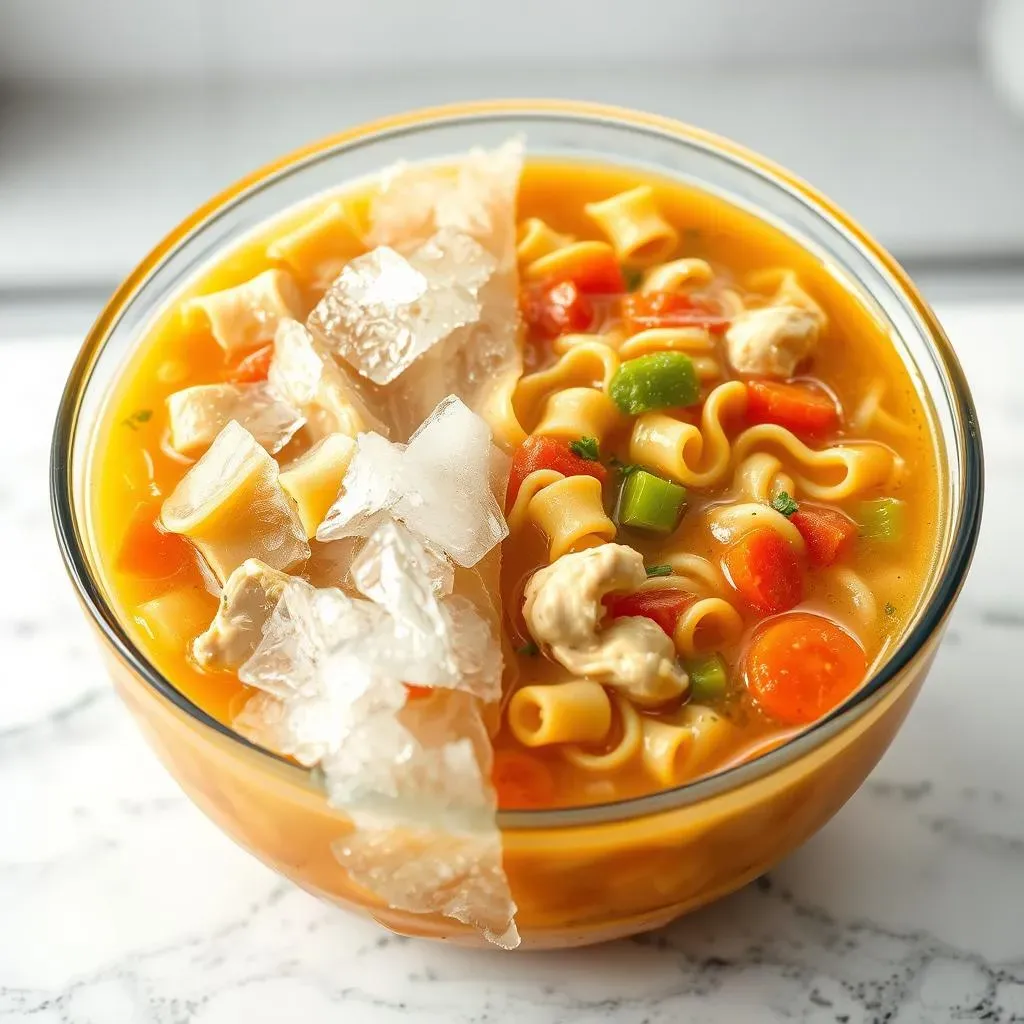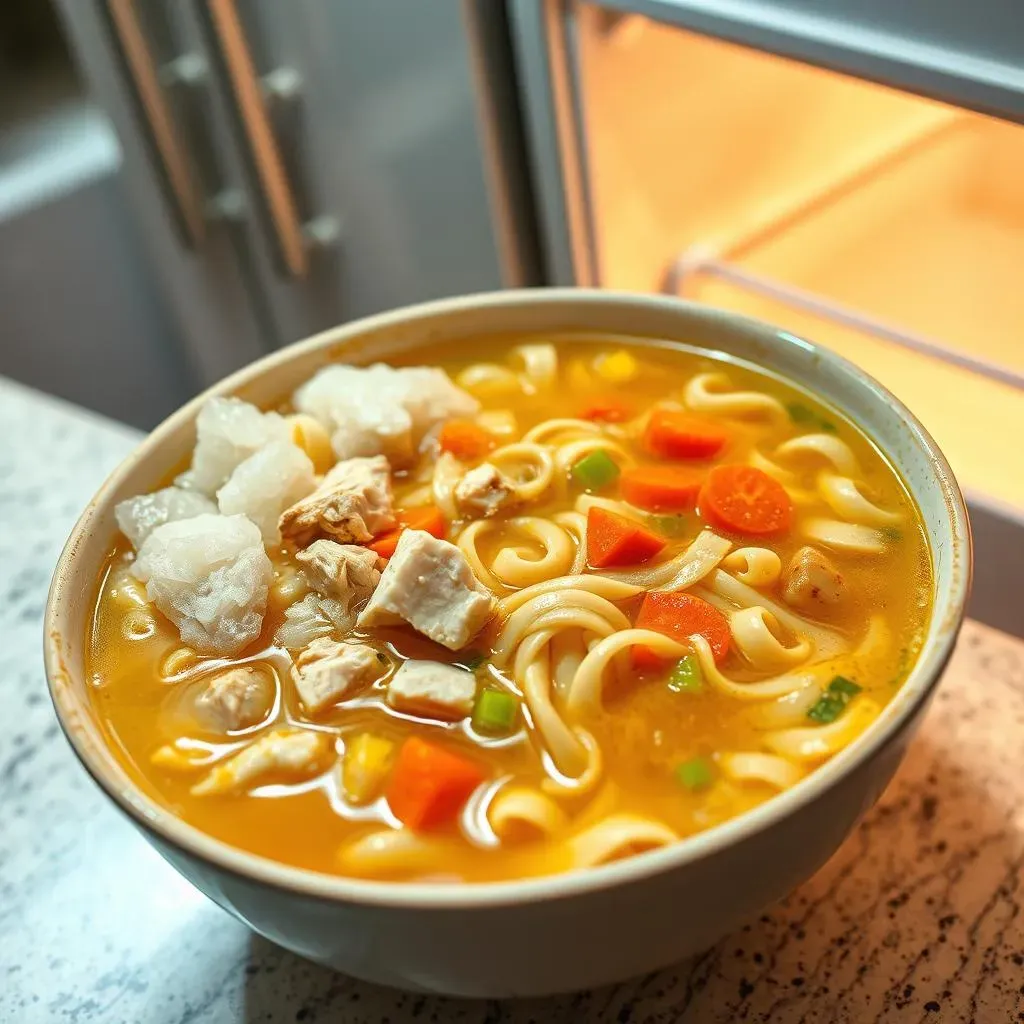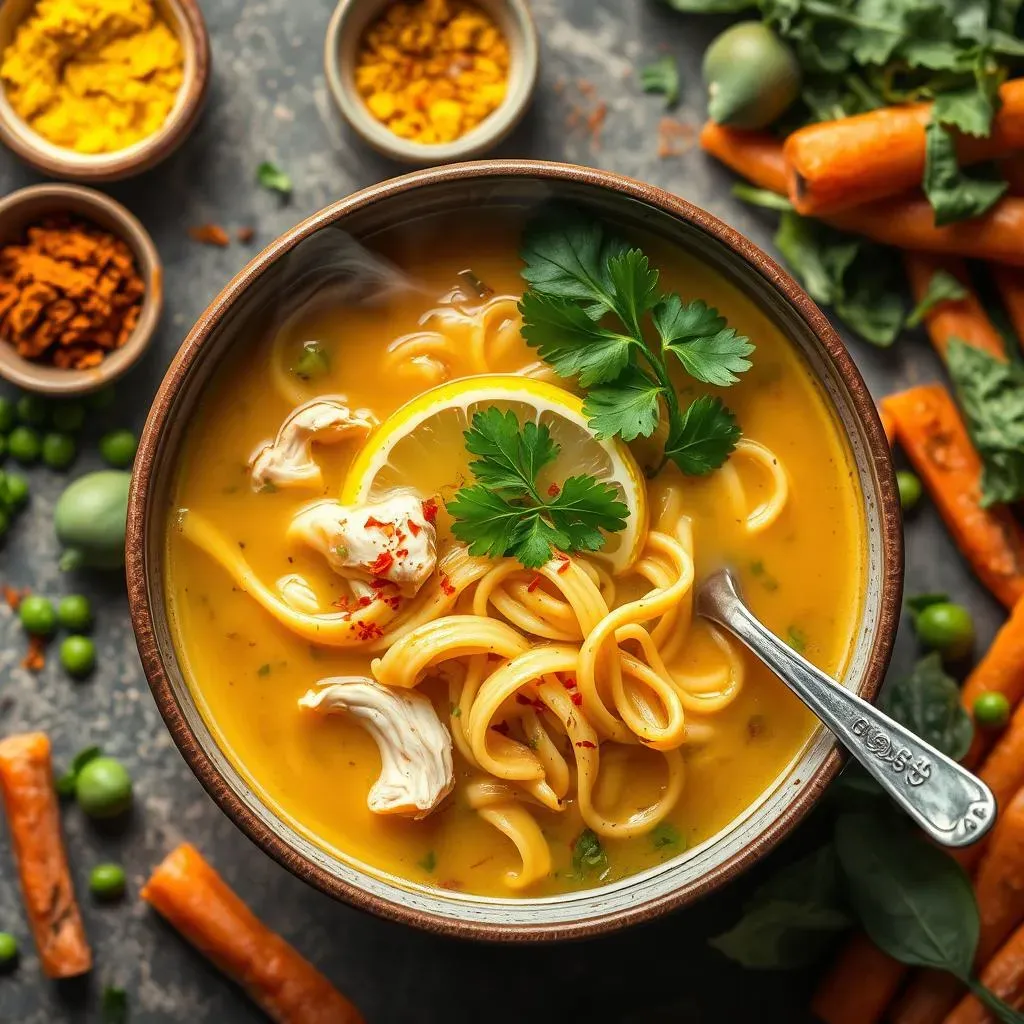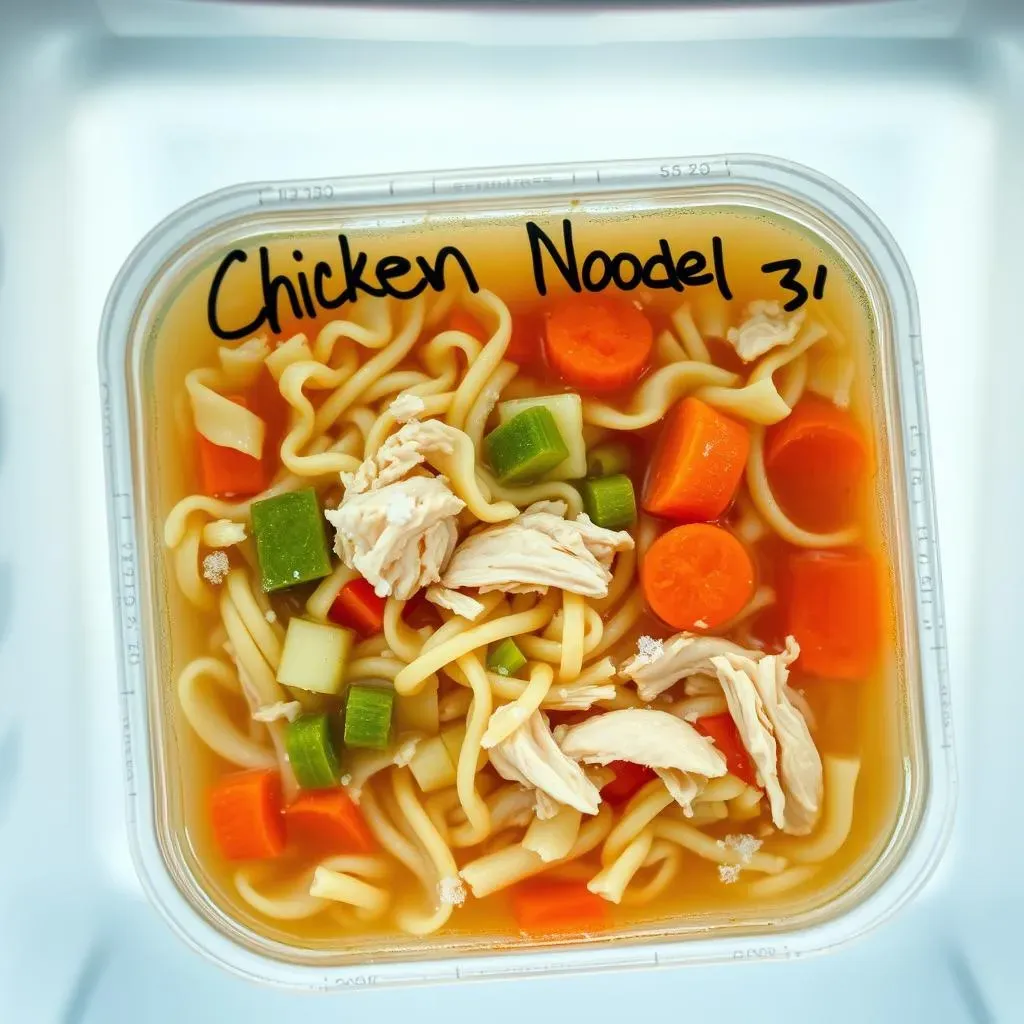Table of Contents
Craving a comforting bowl of chicken noodle soup on a busy weeknight? We've all been there! But who has time to make it from scratch every single time? That's where the magic of freezing comes in. This guide is your ultimate resource for mastering the art of the frozen chicken noodle soup recipe. We'll tackle the big question: Can you even freeze it without turning it into a mushy mess? Spoiler alert: You absolutely can!
Can You Freeze Chicken Noodle Soup? The Definitive Answer

Can You Freeze Chicken Noodle Soup? The Definitive Answer
Let's cut to the chase: Yes, you absolutely can freeze chicken noodle soup! But, and this is a big but, it's not quite as simple as tossing a pot of soup into the freezer and hoping for the best. Certain ingredients hold up better than others, and the way you prepare and store your soup will significantly impact its quality after thawing. Think of it like this: freezing is a pause button, not a reset button. What goes in (before freezing) largely determines what comes out (after thawing). It's all about knowing the tricks to minimize textural changes and preserve that comforting flavor we all crave.
Best Practices for Freezing Your Chicken Noodle Soup Recipe

Best Practices for Freezing Your Chicken Noodle Soup Recipe
Cool It Down, Quick!
Alright, so you've got a bubbling pot of golden goodness. Don't even think about ladling it straight into containers and sticking it in the freezer. That's a recipe for disaster (literally!). The key is to cool that soup down rapidly. Why? Because slow cooling encourages bacteria growth, and nobody wants a side of food poisoning with their comfort food. I like to use an ice bath: Fill your sink with ice water and nestle the pot in there, stirring frequently. You can also portion the soup into smaller containers to speed up the cooling process. Get it down to a safe temperature (below 40°F or 4°C) within a couple of hours. Trust me, this step is crucial.
It's important to use a food thermometer to check the temperature of the soup before freezing. This helps ensure that it has cooled down to a safe temperature and minimizes the risk of bacterial growth.
Container Considerations
Now, let's talk containers. Not all containers are created equal when it comes to freezing soup. You want something airtight to prevent freezer burn and those dreaded off-flavors. I'm a big fan of freezer-safe plastic containers with tight-fitting lids. Glass containers are also an option, but be sure to leave some headspace (about an inch or two) to allow for expansion as the soup freezes, otherwise, you risk shattering the glass. And please, for the love of all that is holy, label your containers! Include the date and what's inside. Future you will thank you.
When choosing containers, consider portion sizes. Freezing individual portions makes for quick and easy lunches or dinners. If you're feeding a crowd, larger containers might be more practical. Here's a quick guide:
Portion Size | Container Type | Ideal Use |
|---|---|---|
Single Serving (1-2 cups) | Small plastic containers, freezer bags | Quick lunches, individual meals |
Family Size (4-6 cups) | Medium plastic containers, large freezer bags | Family dinners, leftovers |
Large Batch (8+ cups) | Large plastic containers, freezer-safe buckets | Meal prepping, freezing large quantities |
Noodle Know-How
Ah, noodles. The heart and soul of chicken noodle soup, but also its biggest freezing challenge. Here's the deal: noodles tend to get mushy and bloated when frozen and thawed. The best way to combat this? Undercook them slightly when you're making the soup. They'll continue to cook during the reheating process. Alternatively, you can freeze the soup base without the noodles and cook them fresh when you're ready to eat. I know, it's an extra step, but trust me, it's worth it for noodle perfection.
Consider using sturdier noodle varieties like egg noodles or rotini, as they tend to hold their shape better than delicate noodles like vermicelli. Adding the noodles after thawing and just before serving will yield the best texture.
Thawing and Reheating: How to Revive Frozen Chicken Noodle Soup

Thawing and Reheating: How to Revive Frozen Chicken Noodle Soup
The Overnight Thaw: A Gentle Awakening
The absolute best way to thaw your frozen chicken noodle soup is the slow and steady approach: the overnight thaw in the refrigerator. This method ensures even thawing and minimizes the risk of bacterial growth. Simply transfer your frozen soup from the freezer to the fridge the night before you plan to eat it. By morning, it should be thawed enough to easily transfer to a pot for reheating. If you're short on time, you can try the cold water bath method (more on that below), but the fridge is always your safest bet.
I know, planning ahead can be a pain, but trust me, your taste buds will thank you. Think of it as a little act of self-care. You're setting yourself up for a delicious, stress-free meal. Plus, a slow thaw helps preserve the texture of those precious noodles!
"Good soup is one of the prime ingredients of good living." - Louis Bromfield
Speed Thawing: When Patience Isn't an Option
so life happens, and sometimes you forget to take the soup out of the freezer the night before. Don't panic! There are a couple of speed-thawing options. The first is the cold water bath. Place your frozen soup container in a large bowl filled with cold water, changing the water every 30 minutes or so. The moving water helps to speed up the thawing process. Never use hot water, as this can create a breeding ground for bacteria. Another option is to use the defrost setting on your microwave, but be careful! Microwaving can lead to uneven thawing and can make the noodles extra mushy. Keep a close eye on it and stir frequently.
Once the soup is thawed (using any method), it's time to reheat. Pour the soup into a pot and heat over medium heat, stirring occasionally. Bring it to a gentle simmer and cook until heated through. Avoid boiling, as this can further degrade the noodles and other delicate ingredients. If the soup seems too thick, add a splash of chicken broth or water to thin it out. Taste and adjust seasonings as needed. A little extra salt and pepper can go a long way in reviving the flavors.
- Refrigerator: Slowest, safest, best texture.
- Cold Water Bath: Faster, requires monitoring.
- Microwave: Quickest, but can affect texture.
Creative Ways to Enhance Your Frozen Chicken Noodle Soup Recipe

Creative Ways to Enhance Your Frozen Chicken Noodle Soup Recipe
so you've got your perfectly thawed and reheated chicken noodle soup. It's good, it's comforting, but maybe it's missing that certain *je ne sais quoi*. Don't worry, I've got you covered! This is where you can really get creative and customize your soup to your heart's content. Think of your frozen soup as a blank canvas, ready to be transformed into a culinary masterpiece. It's all about adding those little touches that elevate it from simple to sublime. Let's dive into some easy and delicious ways to enhance your frozen chicken noodle soup recipe!
First off, fresh herbs are your best friend. A sprinkle of chopped parsley, dill, or chives can instantly brighten up the flavor. Add them right before serving for maximum impact. A squeeze of lemon juice is another fantastic way to add a touch of acidity and balance the richness of the soup. If you're feeling adventurous, try adding a pinch of red pepper flakes for a little kick. And for a truly decadent experience, swirl in a spoonful of cream or crème fraîche. Trust me, these simple additions can make all the difference.
"Soup is a lot like a family. Each ingredient enhances the others; each batch holds its own unique characteristics." - Marcela Valladolid
Spice It Up
Don't be afraid to get a little adventurous with your spices! A dash of turmeric can add a warm, earthy note and a beautiful golden color. Smoked paprika can impart a smoky depth of flavor. And a pinch of saffron (if you're feeling fancy) can elevate your soup to gourmet status. Remember to start small and taste as you go, adding more spice until you reach your desired level of flavor.
- Turmeric: Warm, earthy, golden color.
- Smoked Paprika: Smoky depth.
- Saffron: Gourmet, subtle floral notes.
Veggie Boost
Want to add some extra nutrients and texture to your soup? Toss in some fresh or frozen veggies! Spinach, kale, peas, and green beans are all great options. Add them during the last few minutes of reheating so they don't get overcooked. Roasted vegetables, like carrots, parsnips, or sweet potatoes, can also add a delicious caramelized flavor. Simply roast them separately and stir them into the soup before serving.
I love adding a handful of frozen peas to my soup. They add a pop of sweetness and a vibrant green color. Plus, they cook in just a couple of minutes! It's a quick and easy way to boost the nutritional value of your meal.
Vegetable | Flavor Profile | Preparation |
|---|---|---|
Spinach | Mild, earthy | Add during the last few minutes of reheating. |
Roasted Carrots | Sweet, caramelized | Roast separately and stir in before serving. |
Frozen Peas | Sweet, fresh | Add during the last few minutes of reheating. |
Your Frozen Chicken Noodle Soup Journey Doesn't End Here!
Mastering the art of the frozen chicken noodle soup recipe opens up a world of possibilities for quick, comforting, and delicious meals. From understanding the science behind freezing to experimenting with flavor enhancements, you're now equipped to enjoy homemade soup whenever the mood strikes. So go ahead, whip up a big batch of your favorite chicken noodle soup, freeze it with confidence, and savor the taste of home, anytime, anywhere. Happy slurping!
